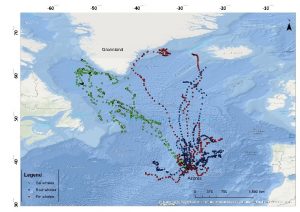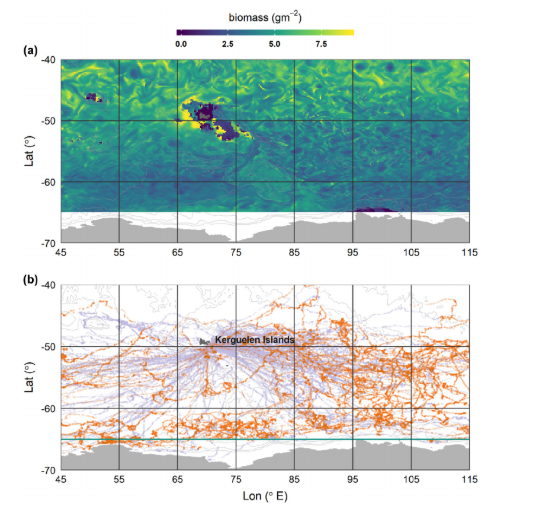Using Micronekton to Study Whales and Elephant Seals
- May 13, 2020
- Category: News

MICRONEKTON MODELS HELP UNDERSTAND MARINE PREDATORS
Tracking highly migratory marine animals and understanding their habitats and feeding ecology are complex issues. However, in two new research publications, the micronekton outputs from the SEAPODYM team were used to provide a more accurate understanding of these animals and their migrations.
Baleen Whales

Baleen whales are highly migratory, going from low latitude waters for breeding and calving in winter to high-latitude productive waters to feed (in summer). Yet the drivers of those migrations, the choice of migration paths, and population distribution are poorly understood. Moreover, baleen whales are exposed to impacts from anthropogenic activities (e.g. being hit by ships or increased noise levels).
Marine top predator distribution and movements are tied closely to those of their prey. However, prey data are scarce, so most ecological modelling is based on proxies of their distribution. But these proxies can have a temporal lag with respect to the prey distribution (e.g., chlorophyll blooms and zooplankton which feed on it multiply only after) and also a spatial lag (e.g., since zooplankton derive with the currents). However, recent advances in ecosystem models allow the incorporation of predicted prey distributions into species distribution models.
Whale locations from tag data were combined with ocean data and with biomass micronekton outputs derived from SEAPODYM. Researchers were thus able to create a comprehensive ecological model to determine the effect of environmental conditions and prey availability on the whales’ migration.
REFERENCES
Green, D.B., Bestley, S., Trebilco, R., Corney, S.P., Lehodey, P., McMahon, C.R., Guinet, C. and Hindell, M.A. (2020), Modelled mid‐trophic pelagic prey fields improve understanding of marine predator foraging behaviour. Ecography. DOI: https://doi.org/10.1111/ecog.04939
, , , et al. Environmental drivers of large‐scale movements of baleen whales in the mid‐North Atlantic Ocean. Divers Distrib. 2020; 00: 1– 16. DOI: https://doi.org/10.1111/ddi.13038
Elephant Seals
In a study on elephant seals in the Kerguelen islands, micronekton assessments were also combined with animal tracks to investigate the habitat and feeding ecology of this species.

